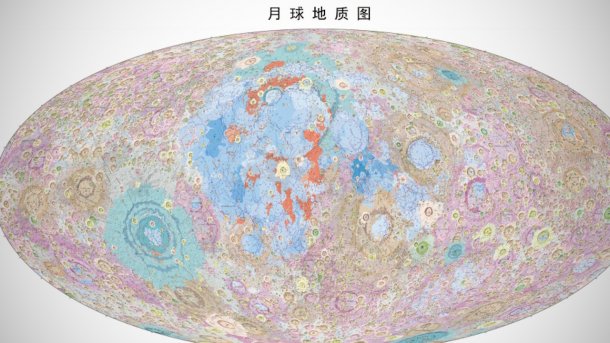Twice the resolution of the US model: China's geological moon map as an atlas
With its own geological atlas of the moon, China has surpassed the best from the rest of the world. Now the maps are to be made generally available.

(Bild: Chinesische Akademie der Wissenschaften)
The Chinese Academy of Sciences has published the most detailed geological map of the moon in book form. The Geologic Atlas of the Lunar Globe, available in English and Chinese, is the result of more than ten years of work by over 100 researchers, summarizes the UV science magazine Nature. The map, which was presented almost two years ago, shows 12,341 craters, 81 large impact basins, 17 types of rock and 14 different types of structure. According to the Academy, it is the first atlas depicting the entire celestial body, based on all the data collected after the end of the US Apollo program. It is the new fundamental work for the exploration of the Earth's satellite.
Significantly better than the US model
The immense map has a scale of 1:2,500,000, which is twice as detailed as that of the US mapping authority USGS. Among other things, the underlying data will form the basis of a digital image of the moon that is being prepared in China. According to the academy, this will not only enable research itself, but also serve space travel by helping to select possible landing sites. The map will also help with the exploration of raw materials. The map is primarily based on data collected by the various Chinese Chang'e lunar probes. However, material from international missions has also been incorporated.
The map was first presented in June 2022, when it was emphasized above all that it clearly trumps the material available from the USA up to that point. The work underlines the enormous progress that the Chinese space program has made lately. The Middle Kingdom now regularly launches ambitious space programs, which are often carried out successfully. In some cases, it even skips intermediate steps that the US space agency NASA, for example, has used to approach its successes. The recently published atlas – for which no price has been announced – is also likely to play an important role in the new race to the moon, which has long since begun.
(mho)